Blackjack, also known as 21, must be one of the most popular offerings at gambling establishments as it poses as the only casino game where the tables are turned, allowing skilled players to extract an advantage that surpasses that of the house. The exact origins of this card game elude historians to this day but many would agree blackjack first emerged on French soil at the turn of the 18th century and derived its most basic rules from a similar game called Vingt et Un. Later on, French settlers helped spread the game across North America where it soon became a huge success.
When the game first traveled to the other side of the ocean, it was played in accordance with rules that were quite different than those we know today. At the time, blackjack bore a certain semblance to poker because the players were required to place a bet before each card they were dealt. The fixed rules the dealers complied with also differed in that only the dealer was allowed to double down. The card game went by the name of 21 until it made it to the floors of Las Vegas casinos at the start of the Great Depression when gambling was legalized across Nevada.
Since the game was still a novelty back then, casino operators devised a clever way to draw gamblers’ attention by offering them enhanced odds of 10 to 1 for hands consisting of an ace of spades and a jack of clubs or spades. This practice was discontinued as soon as the game gained more popularity but it gave blackjack its official name.
Blackjack continues to attract crowds of players to the floors of landbased gambling venues but has also found a home at online casinos. It remains one of the most popular card games in the world and it is for this reason precisely, numerous blackjack variations have sprung into existence in the past century. Some variations share common basic rules while others feature new side bets with increased payouts. In the following article, we have selected ten of the most popular variations you can find online or at some landbased casinos, so continue reading to learn more about their peculiarities.
Brief Overview of Blackjack Rules and Bets
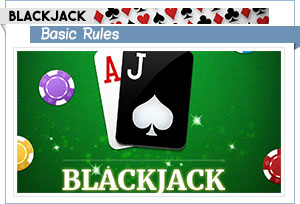 Let’s go through the game’s most basic rules and bet types in brief for those of you who are yet to wade into the world of blackjack. Simply put, blackjack is a game that combines luck and skill and can be played with one to eight decks of cards. The standard varieties would use a full French deck or decks, containing all 52 cards.
Let’s go through the game’s most basic rules and bet types in brief for those of you who are yet to wade into the world of blackjack. Simply put, blackjack is a game that combines luck and skill and can be played with one to eight decks of cards. The standard varieties would use a full French deck or decks, containing all 52 cards.
Blackjack is played against the house and the purpose of the player is to beat the dealer by forming a hand whose total is as close to 21 as possible but without surpassing it. The scoring is determined by the value of the cards your hand consists of. The queens, kings, tens, and jacks are worth ten points whereas the remaining cards, bar the ace, are worth their pip values. The aces are key cards here since they can be counted either as 11 or as 1. Starting hands containing an ace are called soft because the player cannot surpass 21 on the next draw. In standard blackjack, the suits of the cards are irrelevant but are taken into consideration in some more exotic variations of the game where there are extra side bets with enhanced payouts.
Before a blackjack coup starts, the decks are all shuffled together by the dealer so that the cards are mixed randomly, a card is burned, and the pack is then cut by one of the participating players. The cutting involves inserting a red plastic card towards the end of the pack so that the remaining 70 cards or so are left undealt with the purpose of hindering advantage players.
All participants make a bet at the start of the coup, the only exception being the dealer who plays with the house’s bank. Each players receives two face-up cards whereas the house’s hand is dealt one exposed card and one card facing down. Then each player decides how to act on their initial two-card hand. There are several lines of action here. The player can hit and ask for more cards to improve their overall score or decline additional cards (called “staying” or “standing”) if they are confident their total is good enough to beat the dealer’s.
There is also the option of doubling down in which case the player posts a side bet equal to their original stake and is dealt only one more card. If two cards of the same numerical value are dealt to someone, they are given the option to split and play them as two separate hands, but this also requires an additional bet on behalf of the players.
Sometimes it would happen so that the dealer’s exposed card is an ace. In such instances, players are offered to insure their hands against a dealer blackjack (a pat hand consisting of an ace and a 10-value card) by placing a side bet to the amount of half of their original stake. If it turns out the dealers really has a blackjack, the insurance bet would pay out 2 to 1 and the player would basically break even on the coup. Provided that the dealer flips over a card lower in value than 10, the insurance bet loses and the player plays out their initial hand as normal.
When everyone has played out their hands, it is the dealer’s turn to show their face-down card and act on their hand. In blackjack, dealers must stick to set rules and need to draw cards until they reach or exceed a predetermined total, usually 17 or 18. If somebody’s overall score goes over 21, they lose no matter what the dealer has which is also called “busting”. Whenever the player gets a blackjack, they are paid at odds of 3 to 2 which corresponds to one and a half times their stake. The only exception is when the dealer also has a blackjack, in which case the two hands push.
The Influence of Rule Variations in Blackjack
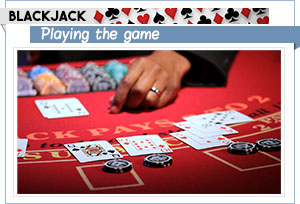 One important trait of blackjack has to do with the constantly changing odds. The cards are not reshuffled after every coup, which is something skilled players would exploit to their benefit. Unlike roulette and craps, blackjack is a game of dependent events since the cards that have left the deck may be used as a guideline as to what happens next. For example, if you are involved in a single-deck game and all four aces are sitting in front of you at the table, you would know for certain that no one is getting a blackjack before the reshuffle.
One important trait of blackjack has to do with the constantly changing odds. The cards are not reshuffled after every coup, which is something skilled players would exploit to their benefit. Unlike roulette and craps, blackjack is a game of dependent events since the cards that have left the deck may be used as a guideline as to what happens next. For example, if you are involved in a single-deck game and all four aces are sitting in front of you at the table, you would know for certain that no one is getting a blackjack before the reshuffle.
In games of chance like roulette or even slots, the house holds a steady edge over its players and maintains it at all times, no matter the outcome. In blackjack, the advantage shifts between player and dealer each time a card is removed from the pack. The dealer’s play is based on fixed rules and the game is generally tilted slightly in the casino’s favour because the player is forced to act first.
The purpose of this explanation is to show you how what appear to be minor changes of the rules can have a significant impact over your long-term profits. Each rule variation in this game has an effect on the advantage the casino holds over you. This effect also extends to the long-term return you can expect at a certain blackjack table.
Let’s take a look at some of the most common discrepancies in blackjack rules and how they influence the house edge of different variations. For starters, the casino’s advantage fluctuates depending on how many decks are in play. The fewer decks are in play, the better for the casinos’ customers since this improves their odds of being dealt blackjacks. Unfortunately, gambling operators have found a way to fight this by altering the rules of single and double-deck variations to improve their advantage.
The drawing rules the dealer needs to abide by also influence your long-term return. At tables where the dealer must hit on soft 17s, the house’s advantage is increased by around 0.22%. In some games, the player may be allowed to surrender their hand if there is no way to improve its total without going bust and this entitles them to have half of their original bet back. The absence of this rule also causes the casino’s edge to increase.
Another thing to look out for is the payout on blackjacks. Always make sure you play games where naturals would return at a rate of 3 to 2 and avoid games where the payouts on blackjacks are 6 to 5 since this adds the extra 1.39% to the casino’s advantage. The same applies to games where naturals would return even money and gives the house edge an increase of 2.27%.
In some variants of the game, like Blackjack Surrender, the dealer would also peep for blackjacks when they show 10s as well as aces, which reduces the house edge in favour of the player by 0.10%. Other variations do not utilize hole cards at all and the dealer initially receives only one exposed card. This rule works to the disadvantage of the players, boosting the casino’s edge by 0.11%.
The remaining rule variations have to do with the betting actions allowed at the table. The optimal rules would allow the player to double down on any card total they like but unfortunately, this is impossible in some blackjack variations where doubling is permitted only on two-card totals of 9, 10 or 11. Such restrictions also translate into a higher house edge. Re-splitting may not be allowed in your blackjack variation of choice, in which case the house edge climbs up by 0.10%.
You may even come across variations where the player would lose ties with totals of 17 and 18 which leads to a 3.58% rise of the casino edge. We take it there is no need to tell you to avoid such games. All the examples of rule variations and their effect on the house edge aim at showing players why they need to select blackjack variants carefully. Choosing a game with favourable rules is the first step towards becoming a successful long-term blackjack player.
Using Strategy Charts to Improve Your Advantage
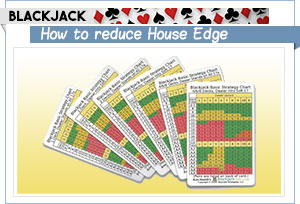 Since blackjack is a game of dependent events, players are provided with different ways to exploit it and improve their chances of turning long-term profits. Each hand can be played optimally, either through advanced techniques like card counting, shuffle tracking, and card sequencing or by using strategy charts that show you the right course of action for all two-card totals you can possibly get dealt at the table.
Since blackjack is a game of dependent events, players are provided with different ways to exploit it and improve their chances of turning long-term profits. Each hand can be played optimally, either through advanced techniques like card counting, shuffle tracking, and card sequencing or by using strategy charts that show you the right course of action for all two-card totals you can possibly get dealt at the table.
Strategy charts date back to the 1950s and were originally devised by four engineers from Maryland – Roger Baldwin, Wilbert Cantey, James McDermott, and Herbert Maisel, who were dubbed the Four Horsemen of the Apocalypse. From the casinos’ perspective, this nickname could not be more fitting since the four men came up with the idea of calculating all optimal moves players can make using their starting two-card hand’s total and the dealer’s up card as guidelines. Several years later, mathematician Edward Thorp further developed the idea and created what became known as “basic strategy”.
A basic strategy chart shows you all the correct moves you need to make on all possible two-card combinations against all face cards of the dealer. The charts are devised on the basis of computer simulations and are proven to be effective in reducing the house edge, albeit failing to eliminate it altogether. In one such chart, the first column contains the player’s totals while the remaining columns show the value of the dealer’s up card.
The correct play for each hand is shown in the grids where the two intersect. Using such charts is usually permitted at landbased tables and some casinos would even offer strategy cards to their blackjack players. When you follow the basic strategy chart to the tee, you reduce the casino’s advantage to about 0.50% which translates into greater returns for you in the long term. The charts cannot guarantee you will win on every hand but are mathematically proven to be effective in reducing the house edge. Without applying one such strategy, a less skilled player relying on hunches only would combat a house edge of about 2.50%.
Do not use the first basic strategy chart you find on the internet, though. Correct plays are affected by the rule variations in blackjack so there may be discrepancies between your chart and the optimal plays for the specific game you bet on. Such discrepancies may be caused by deviations in the rules pertaining to the dealer’s hitting total, the surrender option, the number of decks in play, and DAS, i.e. double downs following a split. Whether or not hole cards are in play also needs to be considered.
Just to provide you with an example, let’s draw a comparison between the correct moves in two multiple-deck variations. In the first game the dealer must stand on soft 17 whereas in the second case, they are required to hit soft 17. Now, provided that you are dealt a hand that totals 11 and the dealer shows an ace, the correct move to make in the first game would be to hit. However, when you check a strategy chart for the second game where the dealer hits soft 17s, you will see the correct play for the same card total against the dealer’s ace would be to double down if allowed. If not, you again hit.
The discrepancies may be minor but playing mistakes tend to add up over time and will cost you in the long run. The bottom line is you need to pay attention to the rule variations if you want strategy charts to work to your advantage. Online blackjack players who tend to switch variations often should feel free to use one of the strategy calculators available online.
| Players’ Hand | Dealer’s Up Card | |||||||||
|---|---|---|---|---|---|---|---|---|---|---|
| 2 | 3 | 4 | 5 | 6 | 7 | 8 | 9 | 10 | A | |
| 8 | H | H | H | D | D | H | H | H | H | H |
| 9 | H | D | D | D | D | H | H | H | H | H |
| 10 | D | D | D | D | D | D | H | H | H | H |
| 11 | D | D | D | D | D | D | D | H | H | H |
| 12 | H | H | S | S | S | H | H | H | H | H |
| 13 | S | S | S | S | S | H | H | H | H | H |
| 14 | S | S | S | S | S | H | H | H | H | H |
| 15 | S | S | S | S | S | H | H | H | H | H |
| 16 | S | S | S | S | S | H | H | H | H | H |
| A-2 | H | H | H | D | D | H | H | H | H | H |
| A-3 | H | H | D | D | D | H | H | H | H | H |
| A-4 | H | H | D | D | D | H | H | H | H | H |
| A-5 | H | H | D | D | D | H | H | H | H | H |
| A-6 | H | D | D | D | D | H | H | H | H | H |
| A-7 | S | D | D | D | D | S | S | H | H | H |
| A-8 | S | S | S | S | S | S | S | S | S | S |
| A-9 | S | S | S | S | S | S | S | S | S | S |
| A-A | SP | SP | SP | SP | SP | SP | SP | H | H | H |
| 2-2 | SP | SP | SP | SP | SP | SP | H | H | H | H |
| 3-3 | SP | SP | SP | SP | SP | SP | H | H | H | H |
| 4-4 | H | H | H | SP | SP | H | H | H | H | H |
| 5-5 | D | D | D | D | D | D | H | H | H | H |
| 6-6 | SP | SP | SP | SP | SP | H | H | H | H | H |
| 7-7 | SP | SP | SP | SP | SP | SP | H | H | H | H |
| 8-8 | SP | SP | SP | SP | SP | SP | SP | SP | SP | SP |
| 9-9 | SP | SP | SP | SP | SP | S | SP | SP | S | S |
Most Widespread Online Blackjack Variations
It is impossible to say with absolute certainty how many blackjack variations exist out there but over a hundred variants of the card game have been recorded throughout the years. In the sections to follow, you will have the opportunity to take a look at some of the most widespread blackjack variants that are played across online and landbased casinos.
Classic Blackjack
 Classic Blackjack continues to be in vogue to this day despite being considered the prototype of the game rules-wise. The game is played with one regular deck of 52 cards and its rules require the dealer to stand on all 17 totals, soft or hard. Blackjacks pay out at the standard rate of 3 to 2 but unfortunately, the dealer does not check for naturals and resplitting is not an option here.
Classic Blackjack continues to be in vogue to this day despite being considered the prototype of the game rules-wise. The game is played with one regular deck of 52 cards and its rules require the dealer to stand on all 17 totals, soft or hard. Blackjacks pay out at the standard rate of 3 to 2 but unfortunately, the dealer does not check for naturals and resplitting is not an option here.
If you split a pair of aces, you can request multiple cards per ace but if you draw a ten-value card on one of your aces, it will count as a regular 21 and not a blackjack. In most cases, the player is not permitted to split unlike court cards, for example a queen and a jack. The rules on doubling down are usually just as rigid and this betting action is permitted only on starting hard totals of 9, 10, and 11.
Blackjack Surrender
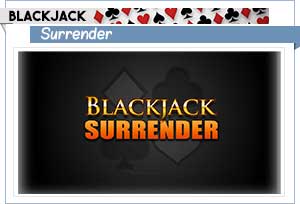 Blackjack Surrender is the preferred game of many fans of 21 for the simple reason it offers some of the most favourable rules you can hope to find at a blackjack table. Multiple decks are in play here, with the number commonly ranging between six and eight. One of the most distinctive features of the game is logically the surrender rule. Most variations would offer either early or a late surrender, but the second option commonly prevails. Early surrender is way too advantageous to players since it enables them to give up on their initial hand against a dealer’s ace prior to the dealer peeping for a blackjack.
Blackjack Surrender is the preferred game of many fans of 21 for the simple reason it offers some of the most favourable rules you can hope to find at a blackjack table. Multiple decks are in play here, with the number commonly ranging between six and eight. One of the most distinctive features of the game is logically the surrender rule. Most variations would offer either early or a late surrender, but the second option commonly prevails. Early surrender is way too advantageous to players since it enables them to give up on their initial hand against a dealer’s ace prior to the dealer peeping for a blackjack.
Naturals would return at a rate of 3 to 2 and dealers would usually be required to stand on all totals of 17. But the advantages of the variation do not end here. The peeking rule is applicable at such tables and the dealer would check for naturals on both aces and ten-value cards, which reduces the house edge even further. Splitting of all pairs is allowed here and DAS applies for all split cards. But it gets better since resplitting is also possible here. Not only that but you can double down on any two-card total you deem fit.
There is more – in many online variants of Surrender, the Charlie rule would apply, usually the seven-card Charlie, but this may vary. Charlie hands are automatic winners no matter what the dealer has as long as the player succeeds in drawing seven cards without surpassing 21.
European Blackjack
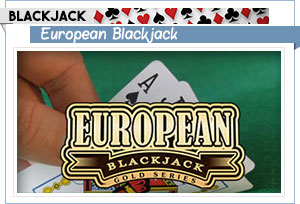 European blackjack predominates across casinos on the Old Continent and its most basic rules would coincide with those of other blackjack variations. What distinguishes this variant from other games of 21 is the lack of hole cards. The dealer receives only one exposed card after the first draw, then you act on your hand, and only then would the dealer get their second card. So logically there is no peeking for blackjacks here.
European blackjack predominates across casinos on the Old Continent and its most basic rules would coincide with those of other blackjack variations. What distinguishes this variant from other games of 21 is the lack of hole cards. The dealer receives only one exposed card after the first draw, then you act on your hand, and only then would the dealer get their second card. So logically there is no peeking for blackjacks here.
The remaining differences between this two-deck game and other blackjack variations lie hidden in the subtleties which unfortunately are not beneficial for players. There are certain restrictions on splitting and doubling down. Doubling down is permitted only on hard totals of 9, 10, and 11. You can split a single time and only cards that are alike, which is to say you can forget about splitting a king and a queen, for example. Usually when you split paired aces, you are permitted to draw only one extra card per ace. All these subtleties boost the house edge by 0.62%.
Vegas Strip Blackjack
 We believe the name pretty much shows you where this blackjack variation is most commonly played, and yes, you guessed it, these rules prevail in casinos across the Las Vegas Strip. The variation is not to be confused with Vegas Downtown Blackjack. The game is played with four standard decks and its set rules dictate that the dealer must stand on all totals of 17.
We believe the name pretty much shows you where this blackjack variation is most commonly played, and yes, you guessed it, these rules prevail in casinos across the Las Vegas Strip. The variation is not to be confused with Vegas Downtown Blackjack. The game is played with four standard decks and its set rules dictate that the dealer must stand on all totals of 17.
There are plenty of advantages Vegas Strip rules can offer, starting with the fact that this is a hole-card game where peeking is performed on both 10-value cards and aces. This spares you the efforts of drawing to a seemingly safe total only to see the dealer has got a blackjack right from the start of the coup.
This may save you the extra expenses on doubling or splitting hands that turn out to be losers. Speaking of doubling down, here you can double on any two-card total, including after a split. When pairs of aces are split, you get to draw only one extra card per ace, though. You can split any two cards to form up to four hands and this applies to unlike court cards as well.
Atlantic City Blackjack
 This is another blackjack variation that is widely played in the United States, but this one borrows its rules from the games played across America’s second major gambling hub, the resort town of Atlantic City. Here the number of decks has reached 8 and dealers typically are required to stand on soft totals of 17. The dealer would also check for naturals when showing an ace. Late surrender is allowed for those who are convinced their starting hands do not bear improvement but remember this means you can give up on your cards only after the dealer has peeped for blackjack.
This is another blackjack variation that is widely played in the United States, but this one borrows its rules from the games played across America’s second major gambling hub, the resort town of Atlantic City. Here the number of decks has reached 8 and dealers typically are required to stand on soft totals of 17. The dealer would also check for naturals when showing an ace. Late surrender is allowed for those who are convinced their starting hands do not bear improvement but remember this means you can give up on your cards only after the dealer has peeped for blackjack.
All pairs can be split and resplit, with the exception of the aces where resplitting is not an option. When you separate two aces, you are entitled to only one card for each of them. The payout for blackjack is normally the usual 3 to 2 in most online variations but some landbased casinos in Atlantic City would offer payouts of 6 to 5, which is a no-go.
Blackjack Switch
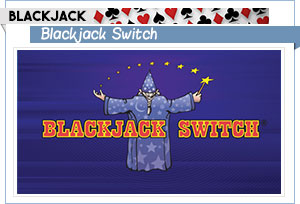 At this point in our article, we reach the blackjack variations that come with more exotic rules and provide for a more refreshing and unconventional experience. Blackjack Switch is one such game and utilizes between six and eight full decks. Here the player is required to bet on two hands simultaneously and each one begs for a separate stake but of equal size. The dealer must hit soft 17s, at least in the majority of cases.
At this point in our article, we reach the blackjack variations that come with more exotic rules and provide for a more refreshing and unconventional experience. Blackjack Switch is one such game and utilizes between six and eight full decks. Here the player is required to bet on two hands simultaneously and each one begs for a separate stake but of equal size. The dealer must hit soft 17s, at least in the majority of cases.
Here is where the interesting part starts. The player is allowed to switch the top cards they are dealt on each hand if this would improve their value. For instance, if you are dealt [Ks, 6s] along with [Qh, 4c], you are sitting on two hard totals and risk going bust on the next draw. However, this can be easily fixed if you substitute the 6 with the queen. This would give you a safe total of 20 on the first hand and a hard total of 10 on the second one, which would also enable you to double down. Doubling and splitting rules are quite liberal. There is also a side super-match bet where you can put extra money on the line that you will initially get dealt at least two matching cards.
If this game sounds too good to be true, it’s because it is. Adjustments have been made to counterbalance the favourable rules and the switch option, starting with the even-money payouts on all naturals. Also, the dealer will push with you whenever they draw to a total of 22, which would normally bust in standard variations.
Perfect Pairs
 Perfect Pairs is the best alternative for players who love to experiment with different side wagers since here there are plenty of those. The majority of the rules coincide with those in other Vegas variations. Six or four full decks are in play, dealers stand on all 17s and draw on 16s and the payout on blackjack is the regular 3 to 2.
Perfect Pairs is the best alternative for players who love to experiment with different side wagers since here there are plenty of those. The majority of the rules coincide with those in other Vegas variations. Six or four full decks are in play, dealers stand on all 17s and draw on 16s and the payout on blackjack is the regular 3 to 2.
What distinguishes this game from the rest is the possibility of making a side bet on the proposition that your starting hand would consist of a pair of some sort, hence the name Perfect Pairs. The game offers greatly enhanced odds for winning side bets but how much you collect depends solely on the type of pair you are originally dealt. The payouts for mixed pairs like [2h, 2s] stands at 5 to 1. Pairs consisting of numerically equal cards of the same suit colour like [2h, 2d] would pay 10 to 1.
The largest payout of 30 to 1 goes out to the person who receives a “perfect” pair at the start of the coup, like two queens of spades, which is possible in multiple-deck games. That being said, it should also be mentioned the house has an edge on these side bets that is truly impressive in size – 6.76% in four-deck games and 5.79% when six decks are in play.
Double Exposure
 Has it ever occurred to you how nice it would be if you can see the dealer’s hole card? In variations like Double Exposure, you can do just that. Usually six or eight decks are involved in this game where both cards of the dealer are dealt facing up for the player to see. If you think there is some kind of a trick here, you are right – there is. There are so many unfavourable rules here, we simply do not know where to start but here we go.
Has it ever occurred to you how nice it would be if you can see the dealer’s hole card? In variations like Double Exposure, you can do just that. Usually six or eight decks are involved in this game where both cards of the dealer are dealt facing up for the player to see. If you think there is some kind of a trick here, you are right – there is. There are so many unfavourable rules here, we simply do not know where to start but here we go.
To begin with, in most Double Exposure variations the dealer would hit soft totals of 17, which is disadvantageous to players over the long-run. All naturals would return even money which also takes away from the game’s appeal. DAS is possible but doubling is generally permitted only on hard totals of 9, 10 and 11 and only court cards of the same type can be split. There is no resplitting of aces, either, and you are dealt a single card per split aces. On top of that, the dealer wins all ties so shall we say more?
Pontoon
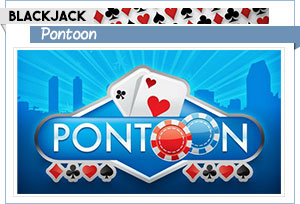 This is easily one of the most peculiar variations of the game of 21 you can possibly find and is immensely popular among Australian players. This unique variation utilizes up to eight decks and shares the same card ranking as that in blackjack. Naturals are called “pontoons” here and the goal is again to beat the dealer with a higher total without busting. This is where the similarities pretty much end.
This is easily one of the most peculiar variations of the game of 21 you can possibly find and is immensely popular among Australian players. This unique variation utilizes up to eight decks and shares the same card ranking as that in blackjack. Naturals are called “pontoons” here and the goal is again to beat the dealer with a higher total without busting. This is where the similarities pretty much end.
Here it is impossible to ensure your hands against potential pontoons and both cards of the dealer are dealt face down which significantly hinders decision-making. Also, the dealer takes all ties. Only pontoons and five-card tricks can prevail over a total of 21 and offer payouts of 2 to 1. The five-card tricks are practically five-card Charlies since in such cases, the player draws five cards without exceeding 21. Another peculiarity has to do with the players’ drawing total. You cannot simply stand on any total you like but are required to draw more cards until you reach at least 15 (or 14 in some variants).
Blackjack with Progressive Jackpots
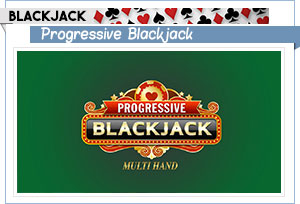 Some variations of blackjack you can find online give you the chance to lock a progressive jackpot – something which is impossible to happen in landbased casinos. Each participating player needs to post a small side bet to qualify for winning the jackpot and a portion of all side bets goes towards the pool. This side bet is not mandatory, though. If you are unwilling to contribute with a side bet, usually of $1, then you best abstain from playing such games altogether because they give the house a monstrous advantage before the jackpot reaches its break-even point.
Some variations of blackjack you can find online give you the chance to lock a progressive jackpot – something which is impossible to happen in landbased casinos. Each participating player needs to post a small side bet to qualify for winning the jackpot and a portion of all side bets goes towards the pool. This side bet is not mandatory, though. If you are unwilling to contribute with a side bet, usually of $1, then you best abstain from playing such games altogether because they give the house a monstrous advantage before the jackpot reaches its break-even point.
Since progressive jackpot variations are commonly played with multiple decks, the payouts on some winning bets depend on the number of aces you get dealt on your hand. If you play the side bet and get a single ace, your payout on the side bet will be 5 to 1. Two off-suit aces return 50 to 1 but if the pair is suited, your bounty will escalate to 100 times the side bet. Three off-suit aces earn you a payout of 250 to 1 but the same suited combination returns at a rate of 5,000 to 1. Four off-suit aces give you a payout of 2,500 to 1. The progressive jackpot is awarded to the player who draws four aces of the same suit in a row. Telling you what the odds of receiving four suited aces in succession in a multiple-deck game will make your eyes water, so we shall skip on that.
- Atlantic City Blackjack
- Best Blackjack Systems
- Best Real-Money Blackjack Sites
- Blackjack Hands
- Blackjack Odds
- Blackjack Rules
- Blackjack Strategy
- Blackjack Switch
- Difference Between Blackjack Games
- European Blackjack
- How To Play Live Casino Blackjack With a Vanilla Prepaid Card
- Multi-Hand Blackjack
- Play Blackjack Online
- Pontoon
- Progressive Blackjack
- The Most Popular Blackjack Versions
- Unlocking the Secrets of Blackjack Switch: A Strategic Twist on Classic Casino Gaming
- Vegas Strip Blackjack













